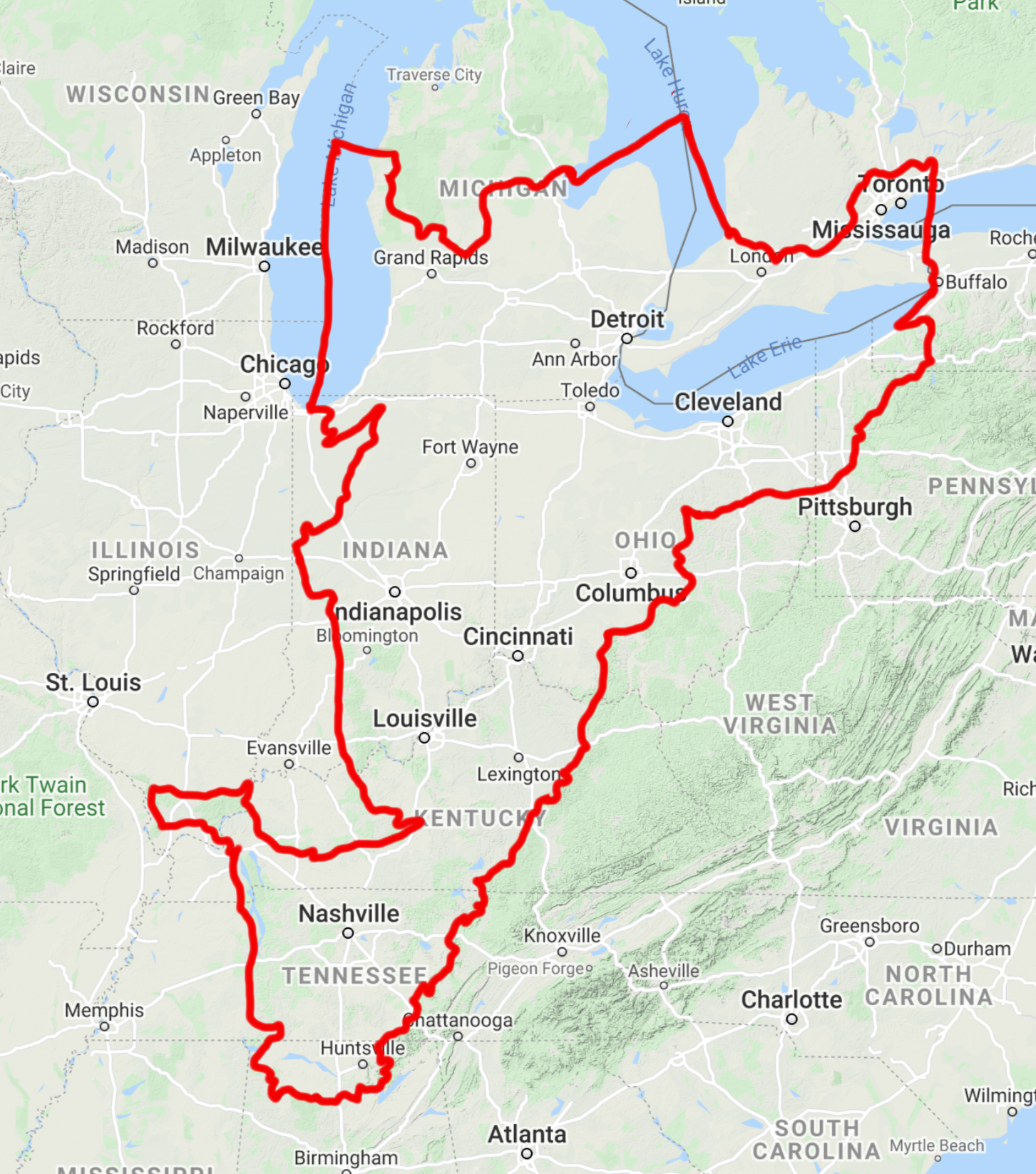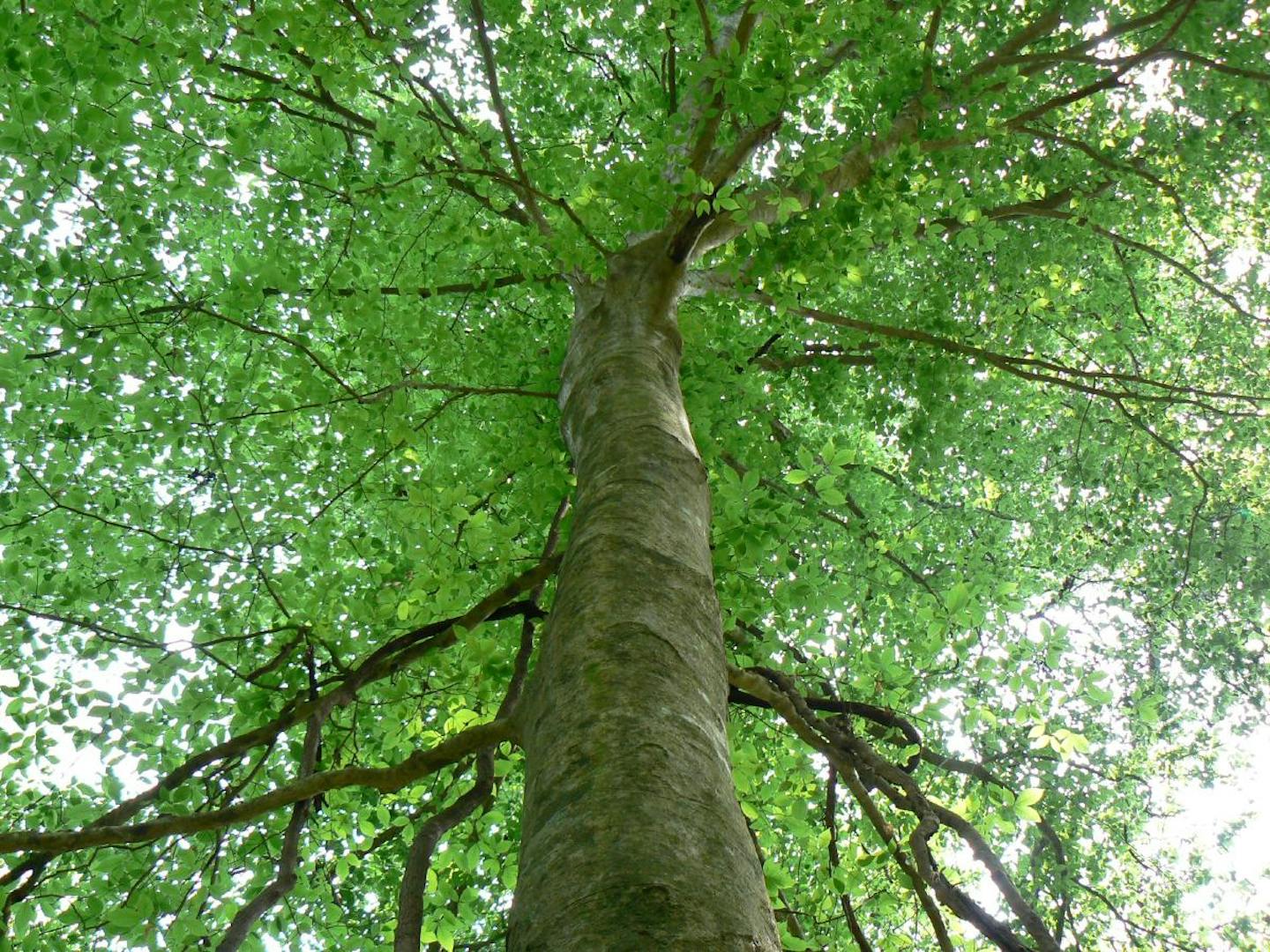American beech: how one species of tree dominates North America
Our “Species of the Week” series highlights the flagship species of each of the 844 unique ecoregions contained within Earth’s bioregions.
Often when we think of species, the exotic comes to mind rather than our own backyards. Stretching from Nova Scotia all the way down to Florida in the United States, you can find sweethearts’ initials carved into the smooth, ashy colored trunk of the American beech. Also known as Fagus grandifolia, it derives its genus name, Fagus, from Latin for "beech", grandis for "large," and folium for "leaf.” Dominating North America, this tree along with the maple, make up 80% of the tree coverage in the eastern deciduous forests. What is most surprising about its reign over this region though, is that it relies heavily on other species to keep its population thriving.

American beech trees are the flagship species of the Southern Great Lakes Forests ecoregion, located in the Interior Plateau & Southern Great Lakes Forests bioregion (NA23).
Growing 70 to 115 feet tall and 3 feet in diameter, the American beech has a uniform trunk, long, slender branches with dark green leaves that are elliptical in shape and end in a distinct point. Papery to the touch, the side of the leaf facing the sun is bright and shiny, while underneath is pale in color. A deciduous tree, the American beech leaves change to an array of brilliant yellow and orange in the autumn. Before losing its leaves however, right after the first heavy frost, beech seeds will make their descent. The edible nut is enclosed in a woody husk resembling a burr that burst open when they fall to the ground. Since the seeds fall directly around the parent tree, the American beech relies on wildlife like squirrels, mice, chipmunks, blue jays, ducks, foxes, rabbits, and even black bears to help relocate its dropped seeds. In the spring, the monoecious tree produces both male and female flowers that are pollinated by the wind to germinate into a new group of seedlings. Seed production doesn’t begin until 40 years of age and the tree will not have a full harvest until 60 years of age.
.jpg)
Image credit: Courtesy of Nature Serve, Flickr
Known for its slow growth and living 300 to 400 years old, it has often been noted that Nelson Henderson was speaking of the American beech when he said, “The true meaning of life is to plant trees, under whose shade you do not expect to sit." However, an Englishman, he was probably referring to the European beech which is in the same family Fagaceae, or alluding to a Greek proverb of the same nature.
.jpg)
Image credit: Courtesy of Congaree National Park, Flickr
Ancient Indigenous people to the region also carved arborglyphs into the trunks of these trees depicting images, substantial people, or cultural symbols which can still be seen today. Even when marred by wildfires, succumbing to Beech bark disease, or developing a rotting trunk, American beech trees are still a staple in the forest and used by wildlife for habitation.



